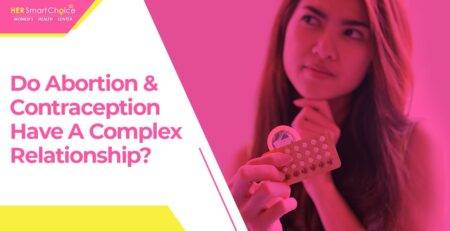Debunking Birth Control Myths
What Social Media Gets Wrong
Social media is a powerful tool for connection and information, but it can also be a source of widespread misinformation, especially when it comes to health. Birth control is a frequent topic of discussion, and unfortunately, many viral posts and videos are filled with myths and inaccuracies. These falsehoods can create unnecessary fear and confusion, making it difficult for people to make informed decisions about their reproductive health.
This guide will tackle some of the most common birth control myths circulating online. We will provide evidence-based facts to set the record straight, empowering you with the reliable information you need to have a productive conversation with your healthcare provider. For a deeper dive into birth control facts and options, you can also explore our comprehensive guide to birth control in Los Angeles.
Myth 1: Birth control will make you infertile.
This is one of the most persistent and damaging myths about contraception. Social media feeds are full of anecdotal stories claiming that using hormonal birth control for a long time will make it difficult or impossible to get pregnant later.
The Facts
Extensive research has shown that using birth control, whether it’s the pill, IUD, implant, or shot, does not cause infertility. Your body’s ability to conceive returns after you stop using contraception. The timing can vary slightly depending on the method.
For methods like the pill, patch, ring, IUD, and implant, fertility can return almost immediately after you stop using them. A large study published in the journal Contraception found that 83% of participants who stopped using hormonal contraception conceived within the first 12 months, which is consistent with conception rates in the general population.
The one exception is the birth control shot (Depo-Provera), which can have a longer- lasting effect. It may take several months for fertility to return after your last injection, but it does not cause permanent infertility. For more facts, see the CDC’s overview on contraceptive safety.
Myth 2: The hormones in birth control are dangerous.
The idea that the hormones in birth control are “unnatural” or toxic to the body is a common theme online. This myth often leads to fears about long-term health risks, including cancer.
The Facts
The hormones in modern birth control-estrogen and progestin-are synthetic versions of the hormones your body naturally produces. They have been studied for decades and are considered safe for most people. Like any medication, they have potential side effects and risks, which is why a consultation with a healthcare provider is essential.
Regarding cancer risk, the relationship is complex but largely reassuring. According to the National Cancer Institute, using combination birth control pills actually decreases your risk of developing ovarian and endometrial cancers. There is a slight increase in the risk of breast and cervical cancer, but this risk is small and generally declines after you stop taking the pill. A healthcare provider can help you weigh these risks against the benefits, including pregnancy prevention and other non-contraceptive advantages like lighter periods and clearer skin. Check out the Mayo Clinic’s article on birth control benefits and risks for more details.
Myth 3: IUDs are only for people who have already had children.
This outdated piece of advice still circulates, suggesting that IUDs are unsafe or difficult to insert for individuals who have never been pregnant.
The Facts
This myth is completely false. Major medical organizations, including the American College of Obstetricians and Gynecologists (ACOG), recommend IUDs as a safe and highly effective contraceptive option for most people, including adolescents and those who have not had children.
Modern IUDs, such as hormonal options like Kyleena and Skyla, are designed with a smaller frame, making them more comfortable for individuals with a smaller uterus. While the insertion can cause temporary discomfort, it is a quick in-office procedure performed by a trained provider. IUDs are one of the most effective forms of reversible birth control available. For more details, see Her Smart Choice resources on IUDs.
Myth 4: You need to take a “break” from birth control to let your body “reset.”
The idea of a “hormone holiday” is popular online, with influencers suggesting that you should periodically stop using birth control to cleanse your system.
The Facts
There is no medical reason to take a break from hormonal birth control. This practice does not offer any health benefits and, more importantly, it increases your risk of an unplanned pregnancy. Continuously using contraception is safe for as long as you need it, provided you are not experiencing prohibitive side effects. If you have concerns about your birth control method, the best course of action is to speak with your provider about them. They can help you manage side effects or switch to a different method that might be a better fit.
Myth 5: The morning-after pill is the same as an abortion pill.
Emergency contraception (EC) and medication abortion are often conflated on social media, leading to significant confusion about how they work.
The Facts
These are two very different medications with different purposes.
Emergency Contraception (The Morning-After Pill): EC pills like Plan B and Ella work by preventing or delaying ovulation. They prevent a pregnancy from starting. They will not harm an existing pregnancy and are not effective if you are already pregnant. Learn more at Office on Women’s Health: Emergency Contraception.
Medication Abortion (The Abortion Pill): This involves a two-drug regimen (mifepristone and misoprostol) that ends an early, established pregnancy. It is used to terminate a pregnancy, not prevent one. Our Medication Abortion FAQs explain this process in more detail.
Confusing these two can create barriers for people who need access to time-sensitive emergency contraception.
Myth 6: Natural family planning is just as effective as hormonal birth control.
“Natural” methods, often promoted as “fertility awareness,” are frequently presented online as a side-effect-free alternative to hormonal contraception with similar effectiveness.
The Facts
Fertility Awareness-Based Methods (FABMs) involve tracking your menstrual cycle to identify fertile days and avoid intercourse during that time. While these methods can be effective for some, their typical-use effectiveness rates are much lower than methods like the IUD or the pill.
According to the Centers for Disease Control and Prevention (CDC), FABMs have a typical-use failure rate of up to 23%, meaning nearly 1 in 4 people using these methods will become pregnant in a year. In contrast, the typical-use failure rate for the pill is around 7%, and for IUDs and the implant, it is less than 1%. Achieving higher effectiveness with FABMs requires meticulous tracking and a high level of commitment, which may not be practical for everyone.
Making Empowered Health Decisions
Navigating the world of birth control can be challenging, especially with so much misinformation online. Always turn to credible sources and healthcare professionals for guidance. Your provider can offer personalized advice based on your health history, lifestyle, and reproductive goals. By relying on facts, not fiction, you can make the best choice for your body and your future.
If you have questions about your birth control options, scheduling a consultation with a trusted provider is the most reliable next step.









